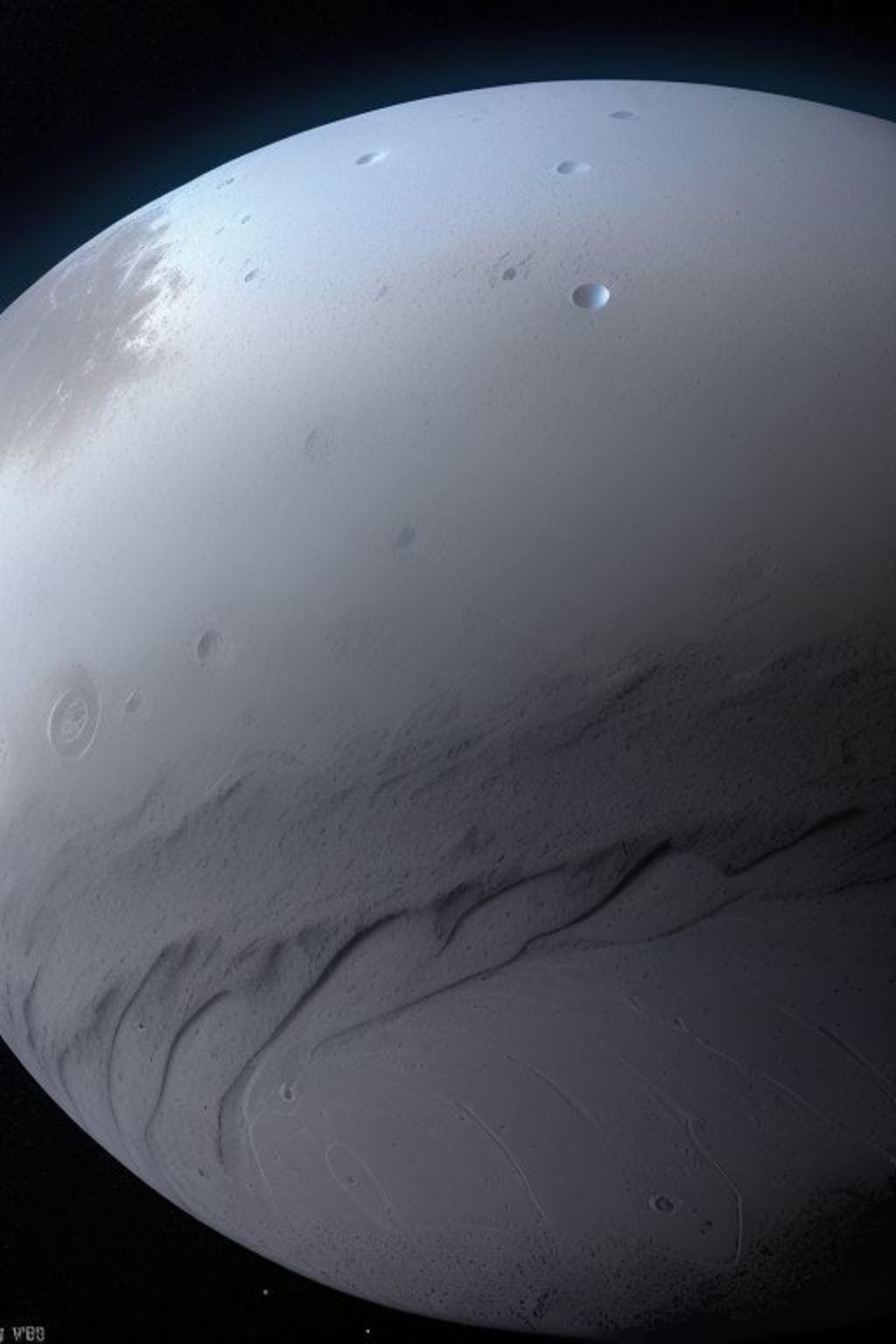
Pluto, once considered the ninth planet in our solar system, has long captivated scientists and space enthusiasts alike with its mysterious allure. Despite being reclassified as a dwarf planet in 2006, Pluto continues to fascinate us with its unique characteristics and enigmatic nature. Let's delve into some of the most peculiar and intriguing facts about this distant world.
Pluto's Eccentric Orbit: One of the most unusual features of Pluto is its highly eccentric orbit. Unlike the relatively circular orbits of the eight major planets, Pluto follows a highly elongated path around the Sun. At times, it ventures closer to the Sun than Neptune, the eighth planet, a phenomenon that occurs during a portion of its 248-year orbit.
Frozen Heart: Pluto boasts a distinctive feature informally known as the "Heart of Pluto" or Tombaugh Regio, named after Clyde Tombaugh, the astronomer who discovered Pluto in 1930. This heart-shaped region is composed of frozen nitrogen and other volatile ices, creating a stunning contrast with the darker terrain surrounding it.
Charon, Its Largest Moon: Pluto's largest moon, Charon, is remarkable for its size relative to its parent planet. In fact, Charon is so massive compared to Pluto that the two bodies orbit around a common center of mass, creating a binary system. This unusual arrangement makes Pluto and Charon more akin to a double-planet system than a typical planet-moon relationship.
Mysterious Haze: Observations by NASA's New Horizons spacecraft, which conducted a flyby of Pluto in 2015, revealed the presence of a hazy atmosphere surrounding the dwarf planet. The origin of this haze remains a subject of ongoing research, but scientists speculate that it may be linked to complex chemical reactions occurring in Pluto's upper atmosphere.
Pluto's Varied Terrain: Despite its small size, Pluto exhibits a diverse range of geological features, including mountains, valleys, and plains. Images captured by the New Horizons mission unveiled a surprisingly dynamic landscape, with towering ice mountains reaching heights of several kilometers and vast plains covered in frozen nitrogen.
Potential Subsurface Ocean: Recent studies suggest that Pluto may harbor a subsurface ocean beneath its icy crust. The presence of this hidden ocean could have significant implications for the planet's geology and potential habitability, although further research is needed to confirm its existence.
Pluto's Complex Moons: In addition to Charon, Pluto has four smaller moons: Styx, Nix, Kerberos, and Hydra. These irregularly shaped satellites exhibit peculiar orbits and are thought to have originated from a collision between Pluto and another celestial body in the distant past.
Extreme Temperature Variations: Despite its relatively small size and distance from the Sun, Pluto experiences significant temperature variations across its surface. While temperatures near the equator can rise to around minus 230 degrees Celsius (-382 degrees Fahrenheit), regions farther from the Sun can plummet to temperatures as low as minus 240 degrees Celsius (-400 degrees Fahrenheit). These extreme temperature fluctuations are primarily due to Pluto's highly elliptical orbit and thin atmosphere.
Discovery of Pluto's Atmosphere: The discovery of Pluto's tenuous atmosphere came as a surprise to scientists. Despite its low pressure and composition primarily of nitrogen, with traces of methane and carbon monoxide, Pluto's atmosphere plays a crucial role in shaping its surface features through processes like sublimation and condensation.
Pluto's Rotation and Tilt: Pluto's rotation is unique among the planets in our solar system. Unlike most planets, which have relatively upright axes of rotation, Pluto's axis is tilted at an angle of approximately 120 degrees relative to its orbit. This extreme tilt results in peculiar seasonal changes and long periods of sunlight or darkness across different regions of the dwarf planet.
Pluto's Color Diversity: Images captured by the New Horizons spacecraft revealed a surprising array of colors on Pluto's surface, ranging from reddish-brown to pale blue. These colors are believed to result from complex chemical processes involving the interaction of sunlight with methane and other compounds present on the surface.
Pluto's Connection to the Kuiper Belt: Pluto is a prominent member of the Kuiper Belt, a vast region of icy bodies beyond the orbit of Neptune. Studying Pluto provides valuable insights into the origins and evolution of the outer solar system and offers clues about the formation of planets and other celestial bodies in our cosmic neighborhood.
In summary, Pluto's status as a dwarf planet does not diminish its significance in our exploration of the solar system. From its unique orbital characteristics and diverse surface features to its enigmatic atmosphere and complex moon system, Pluto continues to captivate our imagination and inspire further scientific inquiry. As we continue to study and unravel the mysteries of this distant world, Pluto's role in shaping our understanding of the universe will undoubtedly remain significant for years to come.
About the Creator
Relang
I am a passionate novelist and imaginative writer my words dance across the page, painting vibrant tapestries of emotion and intrigue.






Comments
There are no comments for this story
Be the first to respond and start the conversation.